Cuadernos de Investigación Histórica arises from the "Cisneros" History Seminar of the Fundación Universitaria Española. It has an annual periodicity and its objective is the research, study and dissemination of various themes of Universal History and the History of Spain. The usual language of expression is Spanish, and it is aimed mainly at researchers of spanish history.
About the Journal
GUIDELINES FOR AUTHORS
- GENERAL INFORMATION
Cuadernos de Investigation Histórica is a Spanish publication of the Fundación Universitaria Española publishing house (CIF: G-28433670), a foundation registered in the Registry of Foundations on March 24, 1949. It has been published uninterruptedly since 1977, currently with a fixed annual periodicity .
It is a peer-reviewed publication that uses the external peer-review system, in accordance with the publication standards of the APA 7.0 (American Psychological Association). Compliance with these requirements facilitates their indexing in the main international databases, guaranteeing a greater dissemination of the published articles and, therefore, of their authors and work centers.
"C.I.H." It is indexed in: Periodicals Index Online, Historical Abstracts, MLA - Modern Language Association Database, DIALNET, Latindex, MIAR, DICE and is evaluated in: SCOPUS, DOAJ, Latindex Catalog 2.0 and CARHUS Plus + 2018
The journal is published in a double version: printed (ISSN: 0214-6272) and electronic (e-ISSN: 2660-5880) and admits articles in spanish and english. In some specific cases on an exceptional basis, provided that the article is considered relevant by the editorial team, also in French. Digitally, accessible in full text, free of charge, for the entire scientific community and researchers around the world.
Hosting: https://revistas.fuesp.com/cih
Each job is identified with a DOI (Digital Object Identifier System).
The journal is a member of Crossref, it is registered in the Similarity Check services to detect plagiarism and in Cited by, which provides open access to citations of published articles. In this way complying with the I4OC standards for open citations.
- SCOPE AND POLICY
-
Thematic
Cuadernos de Investigación Hstórica arises from the "Cisneros" History Seminar of the Fundación Universitaria Española. It has an annual periodicity and its objective is the research, study and dissemination of various areas about of Universal History and the History of Spain. The usual language of expression is spanish, and it is aimed mainly at researchers of spanish history. However, articles in english are also accepted and exceptionally in french.
- Contributions
"C.I.H." preferably publishes research results on aspects of Spanish history in the economic, social, political and cultural fields, from a multidisciplinary perspective. Reports, studies and proposals, as well as selected literature reviews (state-of-the-art articles) can also be submitted, as well as reviews of scientific works that have been published and have been subjected to peer review.
The works must be original and collect final research results, in addition to not having been published in any medium or being in the process of publication, the authors being the responsibility of compliance with this rule. The contributions in the journal can be:
-Research: 5.000 / 7.000 words of text, including title, abstracts, descriptors, tables and references
-Reports, Studies and Proposals: 5.000 / 7.000 words, including title, abstracts, descriptors, tables and references
-Reviews: 1.500 / 5.000 words, including author, work, date of publication, publisher and country of publication.
"C.I.H." is published once a year and could has three sections: 1) MONOGRAPHIC: pre-planned monographic section, with a public call to send articles through the call for papers, coordinated by experts on the subject. 2) MISCELLANY: varied contributions within the general theme of the publication. 3) REVIEWS: on published scientific works. The Editorial Board assigns the manuscripts to the most pertinent section. All three sections do not necessarily have to be given.
Authors may submit manuscripts for evaluation without a predetermined date, although, for entry purposes, they will be considered received based on the OJS assignment. The monographs are closed three months before the issue of the journal.
- EDITORIAL PROCESS
"C.I.H." acknowledges receipt of the works sent by the authors and informs by mail and on the platform of the estimation / rejection process, and acceptance / rejection, as well as, in case of acceptance, the editing process. The official website offers the complete publication lines, the check prior to submission, the structure format of the manuscripts, the fillable cover, the guide for OJS submission of the manuscript (manager), as well as the evaluation protocol for external reviewers.
Within a maximum period of 30 days, from the receipt of each work, they will receive notification of receipt, indicating if the work is rejected or if the work is preliminarily estimated for evaluation by the scientific advisors. In the event that the manuscript presents formal deficiencies or is not included in the thematic focus of the publication, the Editorial Board will formally or thematically reject the work without the option of returning. No further correspondence will be maintained with authors of rejected articles. On the contrary, if it presents superficial formal deficiencies, it will be returned to the author for correction before the beginning of the evaluation process. The entry date of the work will not count until the correct reception of the manuscript. It is strongly recommended that the manuscript be checked with the self-check prior to submission.
Manuscripts will be scientifically evaluated, anonymously, by an average of two experts on the subject. In view of the external reports (see EXTERNAL REVIEWERS PROTOCOL) , the acceptance / rejection of the articles for publication will be decided, as well as the introduction, if appropriate, of the appropriate modifications, in terms of length, structure or style, respecting the content of the original. The protocol used by the journal's reviewers is public. To neutralize discrepant judgments between reviewers, 'C.I.H.' employs multiple reviewer review. The term of scientific evaluation of works, surpassed the previous procedures of estimation by the Publishing Council, is of 90 days maximum. The average time for scientific review is 50 days and 50 days for final acceptance.
The works that are positively evaluated, that require modifications (both minor and major), will be returned within a maximum period of 15 days. All authors will receive the scientific evaluation reports, anonymously, so that they can make (where appropriate) the appropriate improvements or replicas.
The authors of accepted papers, before the final edition, will receive the printing tests for their correction by email in PDF format, for their typographic spell correction in a maximum of three days. Only minor corrections can be made on the content of the original manuscript already evaluated. Once the manuscript is finally accepted, the authors will present the final version in english or spanish (depending on the original version), which will guarantee its international consultation and dissemination. The translated text must have a professional quality.
In general, once the external scientific reviews have been seen, the criteria that justify the decision on the acceptance / rejection of the papers by the Editorial Board are the following:
a) News and novelty.
b) Relevance and significance: advancement of scientific knowledge..
c) Originality
d) Reliability and scientific validity: proven methodological quality.
e) Organization (logical coherence and formal presentation)..
f) External support and public / private financing.
g) Co-authorship and degree of internationalization of the proposal and the team.
i) Presentation: good writing.
The authors agree to be members of the International Council of Scientific Reviewers, once their manuscript is published, for the next three years after its publication
-
PRESENTATION AND STRUCTURE OF ORIGINAL PAPERS
Manuscripts must be sent exclusively by OJS 3, which is implemented in the "SUBMISSIONS" section. All authors must register, with their credits, on the OJS platform, although only one will be responsible for correspondence. No author may send or have two manuscripts under review simultaneously, estimating a lack of three consecutive numbers,
Papers will be presented in Time New Roman 12 font, single spacing, full justification and without tabs or carriage returns between paragraphs. Only the large blocks (author, title, abstracts, descriptors, credits and headings) are separated with a return. The page must be 2 cms. on all margins. Papers are presented in Word for PC. The file must be anonymized in File Properties so that the identification of the authors does not appear.
The publication standards are based on APA 7.
- Structure
Two files must be sent simultaneously: 1) Cover (according to the official model); 2) Manuscript, strictly following the instructions given below.
- COVER LETTER
This file, signed by the authors, includes:
- Full name and surname of each of the authors in order of priority (the number must be justified by the subject, its complexity and its length, with the average of the area being three authors). In the case of more than three authors, it is prescriptive to substantively justify the original contribution of the team, since it will be taken into account in the estimation of the manuscript. Along with the names, the professional category, workplace, email of each author and ORCID number must be followed. It is mandatory to indicate if you have the academic degree of doctor (include Dr./Dra. In front of the name). The academic signature (name) must be standardized in accordance with international conventions to facilitate identification in the main databases. It is mandatory to register in the International Registry of Researchers (ORCID) (http://orcid.org).
In addition, it includes a statement of:
- Be an original contribution.
- Financing statement.
- Not sent, during the evaluation and publication process to other journals.
- Confirmation of the signing authorship.
- Acceptance, if applicable, of formal changes in the manuscript in accordance with the rules.
- Partial transfer of rights to the Editorial
- MANUSCRIPT
Manuscripts may be directed to the monographic section, to the miscellaneous section or to reviews section.
Manuscripts may be of three types: a) research articles b) reports, studies or proposals c) reviews
For research articles and for reports, studies and proposals, the structure must be as follows:
- Title of the article (concise but informative), in Spanish first line and then in English, consisting of as many significant terms as possible. A maximum of two lines are accepted (maximum 80 characters with spaces). They are not only the responsibility of the authors but also of the editors. Therefore, if they do not correctly capture the meaning of the work, it may be modified..
- Summary in Spanish of 220/230 words, where the reason and objective of the research, the methodology used, the most outstanding results and main conclusions will be concisely described, with the following structure: justification of the topic, objectives, study methodology , Results and conclusions. It must be written in an impersonal way: «This work is analyzed ...».
- Abstract in English of 200/210 words. For its preparation, as for the title and keywords, the use of automatic translators is not allowed due to their poor quality. The reviewers also analyze this factor when evaluating the work and our reviewers analyze the linguistic level and style if necessary.
- 6 keywords in Spanish / 6 Keywords in English. «C.I.H» recommends using the UNESCO Thesaurus. Only in exceptional cases new terms are accepted. The terms must be in standardized scientific Spanish/English.
Note: In the case of manuscripts that are research articles, the manuscripts will strictly respect the structure presented below, the Notes and Supports epigraphs being optional. Manuscripts that are considered “Reports”, “Studies”, “Proposals” and “Reviews” in epigrahps 2, 3 and 4 are also flexible. The inclusion of References in all works is mandatory.
- Introduction and state of the question: It must include the rationale and purpose of the study, using bibliographic citations, as well as the most significant literature review on the subject at a national and international level.
- Material and methods: It will be presented with the precision that is convenient for the reader to understand and confirm the development of the research. Where appropriate, the sample and the sampling strategies will be described, as well as the type of statistical analysis used. If it is an original methodology, it is necessary to state the reasons that have led to its use and describe its possible limitationss.
- Analysis and results: An attempt will be made to highlight the most important observations, describing, without making value judgments, the material and methods used, as well as the most relevant results of the investigation. The results will be presented in figures or / and tables according to the rules of the journal (see other annotations). They will appear in a logical sequence in the text, tables or essential figures, avoiding data redundancy.
- Discussion and conclusions: It will summarize the findings, relating the observations themselves with other studies of interest, pointing out contributions and limitations, without reiterating data already commented on in other sections. The inferences of the findings and their limitations should be mentioned, including the deductions for future research, as well as linking the conclusions with the objectives of the study, avoiding gratuitous statements and conclusions not fully supported by the data of the work.
Notes: These considered exceptional and will always go to the end of the article (collected before the references). They must be incorporated manually, since the automatic process of Word is not recognized by the layout systems. The numbers of the notes are placed in superscript both in the running text and in the final note, being placed in the text before the closing point or comma. Notes that collect simple bibliographic citations (without comments) are not allowed, since these must go in the references.
Funding Agency: TheCouncil of Science Editors advises authors to providea financial support statement for the research project. Research studies that are backed by competitive national and international projects will be considered a priority. In any case, this section, which is very important for the scientific assessmentof the manuscript, should be made anonymous with XXX for its initial evaluation, so that the authors and research groups are not identified.These, however, should be clearly stated on the Cover letter, and later on the final manuscript.
References:Bibliographic citations must be included as references to the text. The bibliography should not include any references not cited in the text. The number of references must be sufficient and necessary for contextualizing the theoretical framework, the methodology used and the results of research in an international research context. These are to be presented alphabetically by the author’s first surname(adding the second surname only when the first surname is very common and attached with a hyphen). Bibliographic citations must be taken from the original documents –preferably journals and, to a lesser extent, books–always indicating the initial and final page of the article or work from which they have been taken, except for complete works.
Given the importance for indexing purposes of citations and calculations of impact factors, correct citation will be assessed in accordance with the APA style 7th edition,valuing the inclusion not only of national but also international references from prestigious international journals(http://bit.ly/2JkuWs8).
- Guidelines for references
PERIODICAL PUBLICATIONS
- Journal article (one author): Surname, initials, author name. (Year of publication). Article title. Title of the journal in italics, volume of the journal (journal number), pages covered by the article. DOI or URL of the resource.
- Journal article (up to twenty authors): Surname, Initials name author1, Surname, Initials name author2 and Surname, Initials name author X. (Year of publication). Article title. Title of the journal in italics, volume of the journal (journal number), pages covered by the article. DOI or URL of the resource..
- Journal article (more than twenty authors): Last name, First name initials author1, Last name, First name initials author2-19, Last name, Initials first name author6, ... Last name, Initials first name last author. (Year of publication). Article title. Title of the journal in italics, volume of the journal (journal number), pages covered by the article. DOI or URL of the resource.
- Journal article (with DOI or URL): Last name, Author name initials. (Year of publication). Article title. Title of the journal in italics, volume of the journal (journal number), pages covered by the article. DOI or URL of the resource.
Note 1: The references correspond to an international standard model in English. Special characters should not be used in surnames (accents ...).
BOOKS AND BOOK CHAPTERS
-
Complete books: Last name, Author name initials. (Year of publication). Title of the book in italics. Editorial.
- Chapters: Last names, initials name, author of the chapter. (Year of publication). Chapter title. In Title of the book in italics (pages that the chapter covers). Editorial.
ELECTRONIC MEDIA
To cite electronic media, consult specific APA 7 standards:
Example to quote tweet:
- Last name, Initials first name author [@Username]. (Publication date). Up to 20 first words of the tweet [Tweet]. Twitter URL of the resource.
Ejemplo para citar un perfil de Twitter:
-
APA Style [@APA_Style]. (s.f.). Tweets [Twitter Profile]. Twitter Retrieved on November 1, 2019, from https://twitter.com/APA_Style.
DISSERTATIONS AND THESES
- Surname, initials name author. (Year of publication). Title of the academic work in italics [Doctoral thesis, University where it has been read]. Name of the repository or database in which it is hosted. URL of the resource.
-
Unpublished doctoral / master's thesis: Year of publication). Title of academic work in italics [Doctoral thesis, University where it was read]
It is prescriptive that all citations that have DOI (Digital Object Identifier System) are reflected in the References (they can be obtained at https://search.crossref.org/). All journals and books that do not have DOI must appear with their link (in their online version, if they have it, shortened)..
All the web addresses that are presented have to be shortened in the manuscript through https://bitly.com/, with the exception of the DOI that must be in the indicated format.
"C.I.H." has a bibliographic collection. In this case, to maintain scientific coherence with the editorial line, the review of this literature is recommended. However, the saturation of citations of the authors and of this journal (self-citations) should be limited and carefully controlled. National and international journals indexed in the Journal Citation Reports (JCR), Scopus, REDIB, Dialnet Metrics, ERIH and FECYT are recommended.
4.3.Other annotations
The headings in the body of the article will be numbered in Arabic. They will go without a complete box of capital letters, neither underlined nor bold. The numbering must be a maximum of three levels: 1. / 1.1. / 1.1.1. At the end of each numbered heading, a line break will be established.
No text should be underlined. Nor, with the exception of acronyms, is the full box of capital letters used. Foreign words and titles of books and articles will be enclosed in quotation marks (the quotation marks used in the Spanish version are typographic («»); in the English version, English style quotation marks (““) will be used. To facilitate this operation, it is recommended to use the processor's finder / override. No terms will be italicized in the text, where applicable, only quotation marks will be used.
The citations of references will be made with correction, not admitting those that do not fit. As a general rule, according to APA regulations, the author cited in the text is included in the speech, and the year and the number of pages are indicated in parentheses, preceded by a colon, separated by a hyphen. If the author does not go in the speech, it goes inside the parentheses, preceding the year, followed by a comma and space. It is recommended to see examples in published articles. The use of reference managers such as RefWorks, Mendeley or EndNote is recommended, reviewing their results.
The bibliographic citation, both in the discursive thread and in the references, is essential that it responds to uniform and constant criteria. This aspect is key in a scientific journal. Inconsistencies or alterations of the established regulations are not accepted. Please respect the punctuation system: commas, periods, and semicolons.
You have to check the text with the word processor dictionary, since, although many erroneous terms are not detected, it solves some problems automatically. To avoid the general error of marking with two spaces between words, the Word search engine (replace) can be used, pointing to looking for double spaces to substitute for one.
Tables must be presented incorporated in the text in Word in order of appearance, numbered in Arabic and subtitled with the description of the content. They will be used to clarify important points and will not have an extension of more than one page vertically.
Figures, such as photographs and images, must clarify the text in a relevant way and their number will not exceed six between graphs and tables. They will be presented incorporated in the text, according to their order of appearance, numbered in Arabic and titled with an abbreviated description of their content. They must have printing quality, appearing within the text in .PNG format and in separate files in editable (modifiable) format. The originality of your graphic presentation with professional programs will be valued: awGraph (https://bit.ly/2SBkSOC), Plotly (https://bit.ly/2SE-VHKY), ChartGo (https://bit.ly/ 2qoRG0k); Online Chart Tool (https://bit.ly/2zpjA0g), etc. or other programs with 3D graphics.
Abbreviations, only universally accepted ones should be used (see: Units Symbols and Abbreviations). When trying to shorten a term frequently used in the text, the corresponding abbreviation, in parentheses, must be accompanied the first time it appears. Roman numerals will not be used in the text, the point to the right of zero and not the comma will be used for decimals.
Complementary material. When it is required to complement the manuscript with visual, audiovisual, statistical documents and annexed materials, extensive tables, complex color graphics ... which for reasons of format and size cannot be inserted in the articles, these documents will go as extraordinary files, and once accepted, they will be published in a prescriptive way and online, by the author, using the Figshare platform (http://figshare.com), collecting the appointment of the accommodation in the manuscript. This platform also offers a complementary free DOI.
- CHARGES
«C.I.H.» is an «open access» scientific journal that offers all its production in its entirety online and open to the entire scientific community. Likewise, it does not establish any economic rate during the entire editorial process for the publication of the articles, including the scientific review and their layout. The journal "C.I.H." does not charge fees for the submission of papers, nor does it charge fees for the publication of its articles.
6. ETHICAL RESPONSIBILITIES
Each author will present a responsible declaration of authorship and originality, as well as the ethical responsibilities contracted and, if necessary, a declaration of conflict of interest. Optionally, the justification for the choice of the journal will be presented.
-Unpublished. Previously published material is not accepted. Authors are responsible for obtaining the appropriate permissions to partially reproduce material (text, tables or figures) from other publications and for citing their origin correctly. Opinions expressed in published articles are the responsibility of the authors. "C.I.H." uses the CrossCheck anti-plagiarism tool to guarantee the originality of the manuscripts.
-Authorship. Only those people who have contributed intellectually to the development of the work should appear on the list of signing authors. «C.I.H.» declines any responsibility for possible conflicts derived from the authorship of the published works.
-Informed consent. The authors must mention, in the case of research with people, especially minors, that they have been carried out with informed consent.
-Transfer of copyright ownership.The cover letter must specify the transfer ofcopyright ownership ofthe manuscript for its publication in “C.I.H.”.
-
PROMOTION AND DISSEMINATION OF PAPERS
The authors undertake to participate in the maximum dissemination of their manuscript once published, as well as of the entire journal.
«C.I.H.» encourages the authors and the scientific community to the maximum promotion and dissemination of the works in their final version through:
1) Your list of contacts (emails) and social networks (Facebook, Twitter, LinkedIn ...).
2) Institutional repository of your University and public repositories (Mendeley, Cosis ...).
3) Scientific social networks (ResearchGate, Academia.edu, Kudos ...).
4) Personal or institutional website, blog, etc.
5) Google Scholar, ORCID, ResearchID, ScopusID, Dimensions, PlumX ...
6) Printed copies purchased directly and sent to specialists for reading and subsequent citation if appropriate.
For the nomination of future articles by authors of "C.I.H.", the impact of previous works will be taken into account, so that those with citation higher than the annual average of the journal will be preferred.
8. COPYRIGHT
The works published in this journal are subject to the following terms:
The Fundación Universitaria Española publishing house preserves the patrimonial rights (copyright) of published works, and encourages and allows their reuse. The works are published in the electronic edition of the journal under a license “Creative Commons Atribución/Reconocimiento-NoComercial 4.0 Licencia Pública Internacional — CC BY-NC 4.0”, and can be copied, used, disseminated, transmitted and publicly exhibited, provided that : a) the authorship and original source of its publication is cited (journal, publisher and URL of the work); b) are not used for commercial purposes; c) the existence and specifications of this license of use are mentioned.
Self-filing conditions. Authors are allowed and encouraged to electronically disseminate the editorial version (version published by the publisher with their logos, pagination, indication of the volume and number of the journal, ISSN, DOI, etc.), to promote its circulation and dissemination, and with it a possible increase in its citation and reach among the academic communit

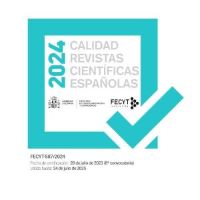




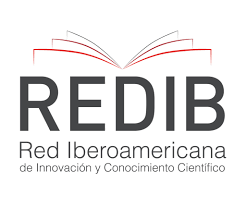
2.jpg)



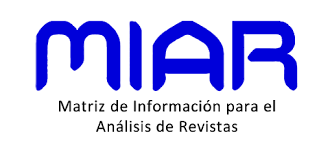



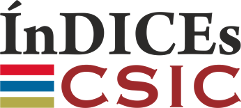



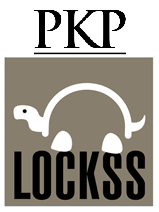
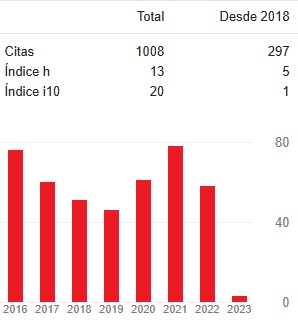



1.png)
1.png)

1.png)


.png)
.png)

.png)
1.png)
1.png)
